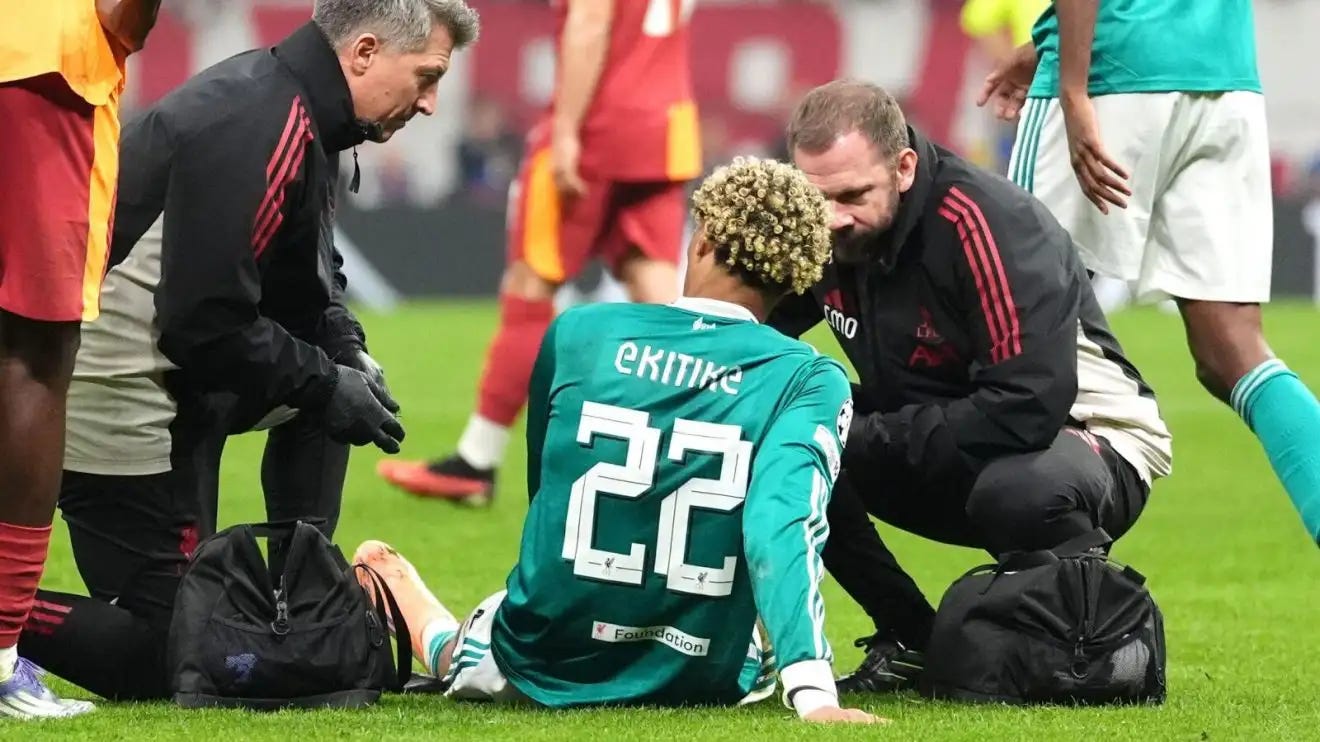Simon Brundish: Liverpool’s Hamstring Headache
– and What the Science Says
Liverpool’s defeat in Istanbul was bruising enough, but the real gut-punch came when Alisson Becker clutched the back of his thigh and trudged off. The medical whispers say he’ll be out for at least a month with a hamstring strain.
Hamstrings and keepers don’t feel like natural bedfellows. We expect forwards and wide players to pull up chasing a lost cause at 90’. But goalkeepers? The truth is, modern keepers are sprinting more than ever: sweeping, covering the high line, explosive 1v1s. Alisson’s style, in particular, demands long accelerations and sharp decelerations. His hamstrings aren’t safe just because he plays in gloves.
This is Liverpool’s third hamstring issue in a week – Jayden Danns (U21s, follow-through on a free kick), Hugo Ekitike (second half v Galatasaray), and now their No. 1. The common thread? End-of-half fatigue and long-lever actions. It’s not a Liverpool-specific curse. It’s the reality of modern football: hamstring injuries are climbing everywhere. In UEFA’s own surveillance, they now make up nearly a quarter of all injuries at elite men’s clubs. That’s not only more cases – it’s more days lost, more re-injuries, and more weeks of patching squads together.
And the context matters. Ekitike’s came late in the second half, after repeated sprints and shifts. Ali’s was after first sprinting 45m to back up play after an attacking freekick, then having to spint 37m back to recover and make a save after Ibou’s terrible pass gave Galatasaray a 1 on 1. Danns’ was the classic “long lever” follow-through on a strike, stretching the hamstrings at both ends. Those scenarios – fatigued sprinting late in halves and stretch-type kicking/deceleration – account for a big chunk of the problem.
Why end of halves matter
If you plot hamstring injuries across the 90 minutes, they aren’t evenly distributed. Almost half arrive in the final third of each half. That’s when fatigue peaks, mechanics deteriorate, and game state stretches players into more transitions and longer sprints.
Add modern stoppage time – five, six, sometimes ten minutes – and you’ve effectively lengthened the danger window. It’s the perfect storm: tired muscles, stretched structures, peak demands.
Mechanisms – sprinting versus stretching
Most football hamstrings fall into two families:
Sprinting-type (usually distal biceps femoris long head): injury as the hamstring eccentrically brakes the swinging leg just before ground contact.
Stretching-type (often proximal semimembranosus or biceps femoris near the tendon): injury at long length during a kick follow-through, a slip, or a stretched deceleration.
Proximal (near the hip) tendon-related strains are slower to heal, often more painful, and more likely to recur. Distal (near the knee) sprinting strains can be quicker with good rehab – but rush the sprint re-loading and they bite back.


